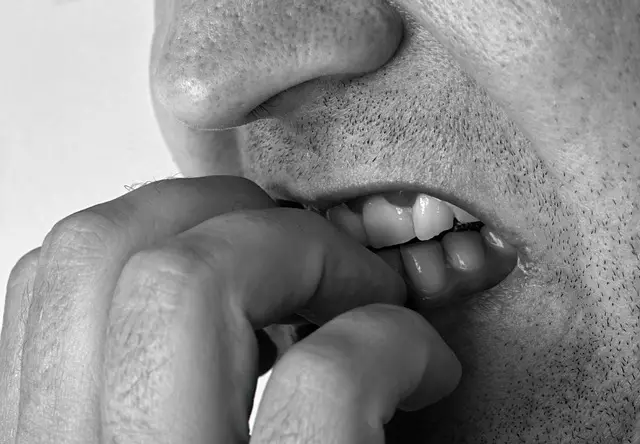Impulsive behaviors are often unplanned actions that occur in response to a sudden desire or urge, while compulsive behaviors involve repetitive actions that an individual feels compelled to perform.
What is impulsive behavior?
Impulsive behavior is characterized by acting on a whim or without thinking things through carefully. People who struggle with impulsive behavior tend to act quickly and often regret their actions later. Impulsivity can manifest in various ways, such as making rash decisions, engaging in risky behaviors, or speaking without filtering thoughts.
This type of behavior tends to be driven by emotions rather than logic or reason. It can stem from underlying psychological issues like anxiety, ADHD, bipolar disorder, depression, substance abuse disorders or trauma-related conditions. For example, someone struggling with anxiety may impulsively avoid social situations that trigger anxious feelings.
Impulse control issues are not uncommon; many people experience occasional moments of impulsivity during their lifetime. However when it becomes chronic and interferes with daily life activities- then it’s time to seek professional help. There are several effective treatments available for managing impulsive behavior including therapy (CBT) and medications like mood stabilizers.
Learning how to manage impulses is key in reducing negative consequences that come along with this kind of behaviour such as financial troubles and relationship difficulties which could lead to more serious mental health problems if left untreated
What is compulsive behavior?
Compulsive behavior is a type of repetitive behavior in which a person feels an intense urge to perform certain actions or routines. These behaviors are often irrational and can interfere with daily life, leading to distress and negative consequences.
People with compulsive behaviors may feel as though they have no control over their actions. They may engage in these behaviors even when they know that it will lead to negative outcomes such as financial problems, relationship issues, or physical harm.
Compulsive behaviors can take many forms including hoarding objects, checking locks and appliances repeatedly, performing rituals or counting things obsessively, excessive hand washing or cleaning, and eating disorders such as binge-eating.
These types of compulsions can be very time-consuming and interfere with normal social functioning. Individuals who struggle with compulsive behavior often experience significant anxiety if they attempt to stop the behavior, leading them back into the cycle of repetition.
While some people may find temporary relief from their anxiety through engaging in compulsive behaviors, seeking professional help through therapy or medication is often necessary for long-term recovery.
Impulsive behaviors Vs. Compulsive behaviors – Key differences
Impulsive and compulsive behaviors are often used interchangeably, but they have distinct differences. Impulsive behavior is characterized by acting without thinking about the consequences of one’s actions. It’s a rash decision made in the heat of the moment with little to no regard for potential outcomes.
On the other hand, compulsive behavior involves repetitive actions or rituals that an individual feels compelled to do in order to alleviate anxiety or discomfort. These behaviors may seem purposeless to those around them, but they serve as a means of coping for someone with compulsions.
Another difference between impulsive and compulsive behaviors is their frequency and intensity. Impulsivity tends to be sporadic, whereas compulsions are persistent over time. Compulsions can become so intense that individuals feel unable to resist them and may experience significant distress if prevented from engaging in them.
It’s important to note that both impulsive and compulsive behaviors can negatively impact one’s life, relationships, work performance, mental health and overall well-being. Seeking help from a professional therapist or counselor who specializes in behavioral disorders can help individuals learn strategies for managing these impulses or overcoming these habits through cognitive-behavioral therapy (CBT) techniques among others.
It’s important not only recognize these key differences but also understand whether you or someone close has been experiencing any problematic symptoms related either Impulsive tendencies as well as Compelling ones – addressing them earlier on will make it easier overcome such challenges!
Examples of compulsive behaviors

Compulsive behaviors are repetitive actions or rituals that an individual feels driven to perform. These behaviors can interfere with daily life and cause significant distress. Here are some examples of compulsive behaviors:
Obsessive cleaning: A person may feel the need to clean their home repeatedly, even if it is already clean.
Checking: An individual may constantly check things like locks, switches, appliances, etc., multiple times a day.
Counting: Some people may have a compulsive need to count objects around them or perform numerical patterns repeatedly.
Hoarding: Accumulating unnecessary items without letting go of any possessions despite negative consequences
Hair pulling/skin picking/nail biting – Known as body-focused repetitive behaviours (BFRBs), these are common compulsions where individuals will pick at skin,
It’s important to remember that everyone has quirks and habits; however, when these actions become excessive and interfere with daily life activities and cause significant distress or harm then they might be seen as compulsions
Examples of impulsive behaviors
(Image by Mohamed Hassan from Pixabay )

Impulsive behavior can manifest in a variety of ways, from minor decisions to life-changing actions. Here are some examples of impulsive behaviors:
Overspending: When someone spends money impulsively without considering the long-term consequences.
Risk-taking: Engaging in activities that have high risks such as gambling, drug abuse or driving recklessly.
Overeating: Eating more than required amounts out of impulse rather than hunger is an example of impulsive eating.
Interrupting Others: Cutting off others when they are speaking or interrupting people mid-conversation shows an impulsive behaviour.
Impulse buying- Making unplanned purchases based on immediate desires instead of careful consideration and budget planning
These actions may provide instant gratification but often lead to negative consequences. If left unchecked, impulsive behaviours can be disruptive and even dangerous to oneself and others around them.
When to seek help for impulsive or compulsive behaviors?
It can be difficult to recognize when impulsive or compulsive behaviors become a problem that requires professional help. Seeking assistance is necessary if these behaviors interfere with daily life, relationships, work or school.
If you find yourself constantly engaging in actions that are harmful to yourself or others without being able to control them, it may be time to seek help. Similarly, if your thoughts and actions revolve around specific rituals and habits that cause distress when not performed, seeking professional aid could benefit you.
Another sign of needing help is experiencing negative emotions such as guilt or shame after indulging in impulsive or compulsive behavior. If these feelings persist and affect your well-being and mental health, then it’s essential to get assistance.
Remember that there’s no harm in asking for support even when the issue seems minor at first glance. Early intervention can prevent escalation of the problem into something more significant later on.
Seeking professional help for impulsive and compulsive behaviors should not be stigmatized but rather seen as an act of self-care towards improving one’s mental health and overall quality of life.
Can a person be impulsive and compulsive?
It’s possible for a person to exhibit both impulsive and compulsive behaviors. In fact, some studies suggest that there may be a link between the two.
Impulsivity refers to acting without thinking about the consequences of your actions. Some common examples include making impulsive purchases, engaging in risky sexual behavior, or speaking before thinking things through.
Compulsions, on the other hand, are repetitive behaviors or mental acts that a person feels driven to perform in response to an obsession or according to certain rules. Examples of compulsions might include excessive cleaning or organizing, repeatedly checking locks or appliances around the house, or performing mental rituals such as counting.
While impulsivity and compulsivity may seem like opposite ends of the spectrum at first glance, they can actually overlap in some cases. For example, someone who experiences intense anxiety about their finances may engage in both impulsive shopping sprees and compulsive budgeting and tracking habits.
If you’re concerned about your own tendency towards either impulsivity or compulsion –or both–it’s important to seek help from a qualified professional who can provide guidance on managing these tendencies effectively.
Featured Image By – Gerd Altmann from Pixabay







